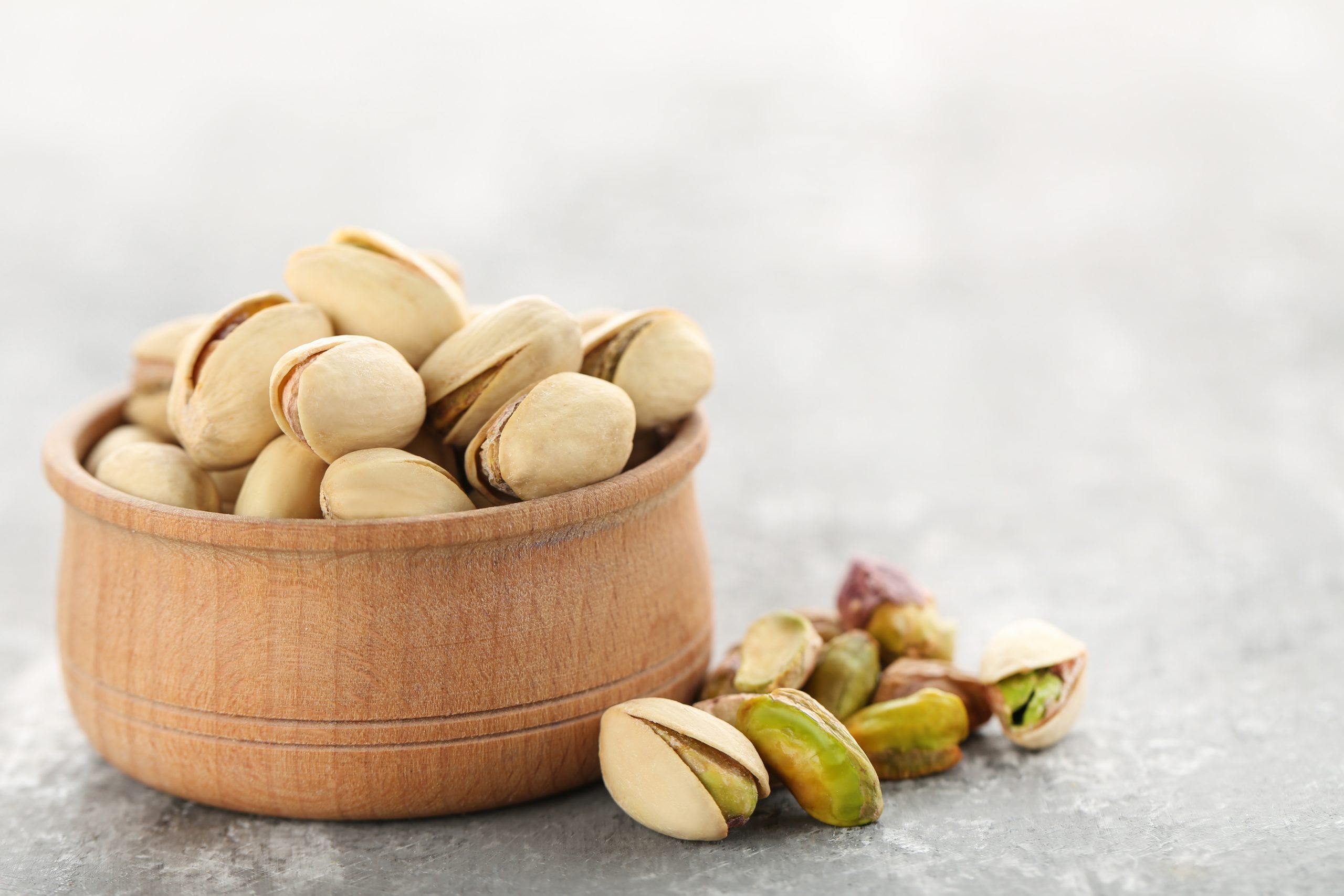Pistachios, those delightful green gems, are not only delicious but also packed with nutrients.
However, like all good things, they too can go bad.
Have you ever wondered how long those pistachios in your pantry will stay fresh?
Well, fear not!
In this article, we will uncover the secret behind the shelf life of pistachios and how to spot the telltale signs of spoilage.
Get ready to crack open the world of pistachios and discover the key to keeping them fresh for longer!
do pistachios go bad
Yes, pistachios can go bad.
Due to their high oil and fat content, they can spoil if not properly stored.
Pistachios can last up to 6 months at room temperature and up to one year in the refrigerator or freezer if stored correctly.
Signs that pistachios have gone bad include mold, discolored nutmeat, bugs, and withered texture.
It is important to check the expiration date on packaged pistachios, although it is more of a “Best Before” date.
Rancid pistachios may still appear fine but will have a sour or nail polish-like smell.
If uncertain, it is best to discard the pistachios or taste one for bitterness and a mealy texture.
Storing pistachios in an airtight container in a cool, dark place will help extend their shelf life.
Key Points:
- Pistachios can go bad due to their high oil and fat content if not properly stored.
- They can last up to 6 months at room temperature and up to one year in the refrigerator or freezer if stored correctly.
- Signs of spoiled pistachios include mold, discolored nutmeat, bugs, and withered texture.
- Checking the expiration date on packaged pistachios is recommended, although it’s more of a “Best Before” date.
- Rancid pistachios may not show visible signs of spoilage but will have a sour or nail polish-like smell.
- Discarding uncertain pistachios or tasting one for bitterness and a mealy texture is recommended.
do pistachios go bad – Watch Video
💡
Pro Tips:
1. Pistachios are actually seeds, not nuts! They are the edible kernels found inside the fruit of the Pistacia vera tree.
2. Pistachios are one of the oldest flowering nut trees in existence, with historical evidence of their cultivation dating back at least 7,000 years.
3. In some cultures, pistachios were once considered a symbol of wealth and royalty. They were even claimed to be a favorite snack of the Queen of Sheba of ancient Yemen.
4. To determine whether pistachios are still good to eat, try the “float test.” Place the pistachios in a bowl of water; if they sink, they are fresh, but if they float, it means they are no longer suitable for consumption.
5. Pistachios have a unique natural characteristic known as the “open-mouth” effect. The shells of some pistachios naturally crack open when the kernel inside matures, providing a visual cue to identify when they are ready to be harvested.
Pistachios Can Go Bad Due To Their High Oil And Fat Content
Pistachios can indeed go bad due to their high oil and fat content. This makes them more prone to spoilage compared to other nuts. The oils in pistachios can turn rancid over time, resulting in an unpleasant taste and potential harm to your health.
To keep your pistachios fresh and enjoyable, here are some tips:
- Store them properly in an airtight container or sealable bag to prevent exposure to air and moisture.
- Keep them in a cool and dry place, away from direct sunlight.
- Check the expiration date before purchasing pistachios to ensure they are fresh.
- Consider refrigerating or freezing pistachios to extend their shelf life.
- If you notice a strong, bitter or off-putting smell, or if the pistachios taste stale, it’s best to discard them.
In summary, the high oil and fat content in pistachios makes them susceptible to spoilage. By following proper storage guidelines and being mindful of any signs of rancidity, you can enjoy fresh and safe pistachios for longer periods.
“The high oils in pistachios can turn rancid over time, resulting in an unpleasant taste and potentially harmful effects on your health.”
Proper Storage For Extended Shelf Life
The good news is that with proper storage, you can extend the shelf life of pistachios and enjoy their freshness for a longer period of time. At room temperature, pistachios can last up to 6 months if stored correctly. However, for even longer shelf life, it is recommended to store them in the refrigerator or freezer, where they can stay fresh for up to one year.
To store pistachios properly, transfer them to an airtight container. This will help prevent the exposure to air, which can accelerate rancidity. In addition, storing pistachios in a cool and dark place, such as a cupboard away from light, can help maintain their quality for an extended period.
Signs Of Bad Pistachios
Identifying Bad Pistachios
To ensure a safe and pleasant eating experience, it is crucial to be able to identify when pistachios have gone bad. Here are some common signs that indicate pistachios are no longer safe to consume:
-
Mold: If you spot any mold on the pistachios, it is a clear indication that they have gone bad. Mold can pose health risks, so it is best to discard them.
-
Discolored Nutmeat: Another sign to watch out for is the presence of discolored nutmeat. If the pistachios appear dark or have unusual discoloration, it is a strong indicator that they have spoiled.
-
Bugs or Insects: Finding bugs or insects in the packaging of pistachios is a definite red flag. These pests can contaminate the nuts and make them unsafe for consumption.
-
Withered Texture: Lastly, if the pistachios have a withered or shriveled texture, it signifies that they have lost their freshness and are no longer suitable for consumption.
If you come across any of these signs, it is important to discard the pistachios to avoid potential health risks.
Check Expiration Date On Packaged Pistachios
When purchasing packaged pistachios, always check the expiration date. However, keep in mind that the expiration date is more of a “Best Before” date and not a safety indicator. Packaged pistachios can still be safe to eat even if the expiration date has passed, as long as they have been stored properly.
To ensure the freshness and quality of packaged pistachios, consider the following tips:
- Inspect the packaging: Look for any signs of damage or tampering. Choose packages that are intact and securely sealed.
- Check for proper storage: If the pistachios have been exposed to moisture, heat, or sunlight, they may lose their quality even before the expiration date. Opt for packages that have been stored in cool, dry environments.
- Perform a sensory check: Before consuming, examine the pistachios for any unusual smell, off-color, or rancidity. Fresh pistachios should have a pleasant aroma and a vibrant, greenish color.
- Consider the taste: If the pistachios taste stale, bitter, or different than usual, it’s best to discard them. Trust your taste buds to determine the quality and freshness.
- Store properly: To extend the shelf life of opened pistachios, transfer them to an airtight container and store in a cool, dark place. This helps to maintain their taste and texture for a longer period.
In conclusion, while it’s advisable to check the expiration date when purchasing packaged pistachios, the expiration date should be viewed as a guideline for optimum freshness rather than a strict safety measure. By properly inspecting, storing, and using your senses to assess the quality, you can still enjoy packaged pistachios beyond their expiration date.
- Bullet point to check packaging
- Ensure proper storage conditions
- Perform a sensory test
- Trust your taste buds
- Store in airtight containers
Appearance Vs. Smell For Determining Rancidity
Interestingly, rancid pistachios can still look perfectly fine. However, their smell can be a giveaway. Rancid pistachios may emit a sour or nail polish-like odor. If you encounter this smell, it’s best to avoid consuming them, as the taste may also be affected by the rancidity.
- Rancid pistachios can look visually appealing despite being spoiled.
- Smell is a key indicator of pistachio rancidity.
- The odor of rancid pistachios can resemble a sour or nail polish-like scent.
- Consuming rancid pistachios may result in an undesirable taste experience.
When In Doubt, Throw It Out Or Taste-Test
If you are unsure whether your pistachios have gone bad, it is better to err on the side of caution. If you notice any signs of spoilage, it’s safer to discard the nuts rather than risk consuming them. However, if you are feeling adventurous, you can taste-test one nut to see if it has a bitter or mealy texture. If so, it is a clear indication that the pistachios have gone bad and should be disposed of.
Airtight Storage For Longer Shelf Life
Storing pistachios in an airtight container is crucial for maintaining their freshness and extending their shelf life. This is particularly important for preventing odors from other foods from seeping into the pistachios and altering their taste. Airtight containers effectively protect the nuts from moisture, air, and other contaminants, ensuring their quality is preserved for a longer duration.
Improved version:
- Storing pistachios in an airtight container is crucial for maintaining freshness and extending shelf life.
- Sealing the container helps prevent odors from other foods from seeping into the pistachios, thereby preserving their original taste.
- Airtight containers provide effective protection against moisture, air, and contaminants, ensuring the quality of the nuts remains intact for a longer duration.
Different Storage Options For Pistachios
When it comes to storing pistachios, you have a few options. You can store them in a cupboard, away from direct light, at room temperature for up to 6 months. Alternatively, for even longer shelf life, you can store them in the refrigerator, where they can last for up to one year, or the freezer, where they can maintain their quality for the same duration.
Importance Of Airtight Container To Prevent Odors
Using an airtight container is essential when it comes to storing pistachios to prevent unwanted odors. Pistachios have a tendency to absorb odors from their surroundings, which can negatively impact their taste and overall quality. By storing them in an airtight container, you can ensure that they remain untainted by any strong-smelling foods nearby.
- Storing pistachios in an airtight container helps prevent unwanted odors
- Absorbing odors can negatively impact the taste and quality of pistachios
- An airtight container ensures pistachios remain untainted by strong-smelling foods nearby.
Refrigeration Or Freezing For Up To 1 Year
If you want to maximize the shelf life of your pistachios, refrigeration or freezing is recommended. Both methods can keep pistachios good for up to one year. However, it is important to note that while the refrigerated or frozen pistachios will remain safe to consume, their texture may slightly change over time. They may become a bit softer or slightly chewier compared to their freshly roasted counterparts. Nevertheless, they can still be used in various dishes or enjoyed as a snack.
Pistachios can indeed go bad due to their high oil and fat content. To extend their shelf life, it is important to store them properly. The signs of bad pistachios include mold, discolored nutmeat, bugs, and a withered texture. While the expiration date on packaged pistachios provides some guidance, appearance and smell are also important indicators of rancidity. When in doubt, it is recommended to throw out questionable pistachios or do a taste test to ensure they are still good to eat.
By storing pistachios in an airtight container and choosing the right storage option, such as refrigeration or freezing, you can maximize their shelf life and enjoy their deliciousness for an extended period. So, go ahead and indulge in these versatile treats that add a crunch to salads, flavor to meals, or serve as a satisfying snack any time of the day!
💡
You may need to know these questions about do pistachios go bad
Is it safe to eat expired pistachios?
Consuming expired pistachios may pose health risks and it is generally not recommended. The changes in taste that occur when pistachios expire, such as bitterness, staleness, or a rancid flavor, indicate the deterioration of the nut’s quality. Additionally, spoiled pistachios may also have a mushy or rubbery texture, losing their characteristic crunchiness. To ensure your safety and enjoyment, it is best to avoid eating expired pistachios if they exhibit these undesirable taste and texture changes.
How long does it take for pistachios to go bad?
When stored inside a cool, dark, and dry pantry, unopened, in-shell pistachios can remain fresh for approximately six months, and sometimes even beyond that. However, it is important to note that if the package has been opened, it is advisable to transfer the contents into an airtight container for optimal storage. Doing so can extend the shelf life of the pistachios, ensuring their freshness for a few months longer.
How do you freshen stale pistachios?
One way to rejuvenate stale pistachios is by utilizing the power of the oven. Begin by preheating your oven to 350°F (175°C). Arrange the lackluster nuts on a baking sheet in a single layer and place them in the oven for approximately 5 minutes. It is important to monitor them closely to avoid any unfortunate incidents of burning. This quick heating process can help bring back the freshness and crunch that once made these pistachios a delightful snack.
Are pistachios bad when they are soft?
When pistachios become soft and lose their crunch, it doesn’t necessarily mean they are bad. In fact, there is a simple way to revive their crispness. If you find your pistachios to be a bit stale, you can shell them and toast them in the oven at 200 degrees F for 10 to 15 minutes. This will help bring back some of the desired crunch, allowing you to enjoy their deliciousness once again. Just remember to exercise a bit of patience and give them a few minutes to cool down before devouring them.
Reference source
https://www.upstateramblings.com/do-pistachios-go-bad/
https://www.quora.com/Do-pistachios-go-bad-If-so-what-does-a-rotten-pistachio-taste-like
https://www.heartofthedesert.com/how-to-store-pistachios/
https://www.savorysuitcase.com/how-to-store-pistachios/



